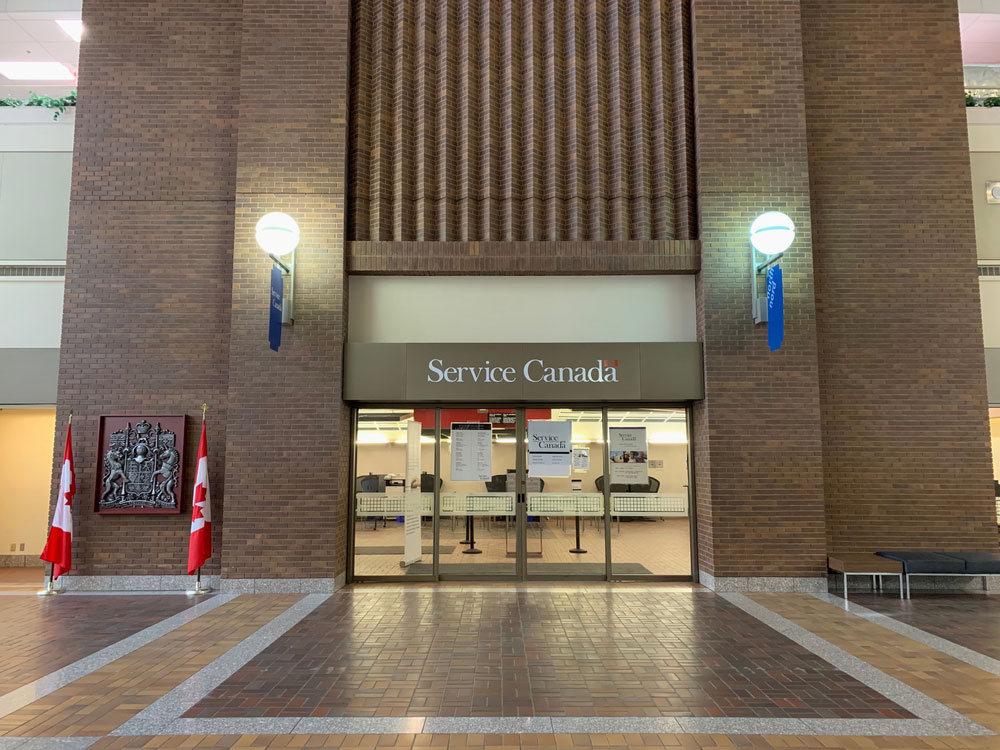Delivering services to Canadians has been an Achilles heel of the federal government for 30 years because of political disinterest and a senior management of “travelling salesmen,” who hop from job to job and barely know the business of the departments they lead, says the former senior bureaucrat who proposed the creation of Service Canada.
“You have deputy ministers and senior executives... who very rarely have deep experience and knowledge of departments, operations and services for which they’re responsible. They haven’t worked their way up in that department and are flying blind to a significant degree,” said Ralph Heintzman, who also launched the Institute for Citizen-Centred Service and the Public Sector Service Delivery Council.
This constant churn of executives moving in and out of jobs has created a public service with “little learning experience, no constancy of purpose or corporate memory.” That makes it very hard for the government to “maintain a focus on service improvement or anything for a long period of time,” he said.
But Heintzman says those are foundational reasons for why service has never been given the attention it deserves. Then come all the operational problems: underfunding, old technology systems that never get replaced, poorly trained and disengaged employees, lack of planning and little accountability for poor service.
Passport and immigration backlogs with long lineups of frustrated and fuming Canadians at Service Canada offices across the country in recent weeks prompted the government to create a new ministerial task force to find ways to improve service.
The 10-member task force is expected to make recommendations outlining short and longer-term solutions that would reduce wait times, clear backlogs and improve the overall quality of services provided.
Big barriers to improving service are investment in technology and recruiting the right people. That’s money and, notably, the minister of finance is not a member of the task force. The task force also comes as the government is launching a strategic review to find $6 billion in savings.
“They now have two conflicting objectives and can’t have it both ways. Which objective will trump the other? If they want to improve service, they will have to spend some money on technology, training and staffing levels,” said Michael Wernick, a former clerk of the Privy Council and the new Jarislowsky Chair recipient in public sector management at the University of Ottawa.
But Heintzman says many of the problems with service delivery are the same as in 1998 when he first presented Treasury Board ministers with a plan for Service Canada, a single one-stop agency to focus on delivery and citizen satisfaction. When the plan was rolled out in 2005, it was billed as the single biggest operational reform in federal history.
And it was all built on putting citizens first, or what he calls serving Canadians “outside in” rather than “inside out.”
“The whole idea of Service Canada was to help increase the standard of service and citizens’ satisfaction with government service. So, when I see those photos of people lined up around Service Canada offices, there’s a pang in my heart,” said Heintzman.
But what’s different now is trust in government is falling like a stone and a wave of populism is exploiting those backlogs to drive the message that government isn’t working.
Heintzman says the research is clear. The satisfaction of Canadians with service is directly tied to citizens’ trust in government.
“One of the reasons why governments should invest in and pay attention to the quality of service is citizen trust,” said Heintzman.
“It makes me even more anxious now, when there are people eager and willing to seize upon the failures of the government to use them as an excuse for attacks on democracy and on the public sector.”
Public servants have two jobs. They offer policy advice and deliver programs and services to Canadians.
Service delivery has long been the poor cousin to policy. The way services are designed and delivered is often dictated by the internal needs of public servants and all the processes and rules they must follow. That means users and frontline workers — who know the ins and outs of how programs work — aren’t always heard.
Frontline managers also rarely make it to the top and ambitious public servants opt for the policy jobs. Executives typically manage up and into ministers’ offices and the Privy Council Office, rather than “manage down to line operations and out to citizens,” said Heintzman.
Prime ministers, ministers, even deputy ministers, pay little attention to operations or service delivery until there’s a crisis. The focus is all policy and “announceables,” not execution.
Knowing politicians aren’t that interested, senior bureaucrats are reluctant to bring up operational problems or push for technology projects to help improve services — especially after the disastrous Phoenix pay system.
“Three-quarters of the responsibility for performance in service delivery rests with the public service,” said Heintzman. “It has to be a public service issue, not only for execution, but in making it a political issue by including it in their priorities to ministers and for funding.”
The government has pinned its efforts to improve services and trust on digital technology. But Heintzman worries the emphasis on technology loses sight of citizens and how to improve service. In many departments, service is rolled into the responsibilities of the chief information officer where the focus is on the latest software, hardware and apps.
“There should be a chief service officer of the government to whom the people responsible for information [management] and IT report, but the tail should not be wagging the dog. The objective is promising a proper service to people of Canada not running an IM-IT operation,” said Heintzman.
A focus on technology brings an “inside-out” approach to service, which means services are built around the priorities of the managers and department, not citizens.
Departments also don’t pay enough attention to service satisfaction — tracking how Canadians view a service and rate it — which Heintzman argues is the only way to improve service.
Rather than measure satisfaction, the government focuses on results and inputs. The Liberals created a “results and delivery unit” modelled after the deliverology theory of Britain’s Michael Barber that did little to improve service.
Heintzman says departments don’t plan enough. They don’t set targets or deadlines built around how they want to improve a service over the long run. Service standards are set “inside out” with promises to answer a call, fix a complaint or provide a service within a certain time, which are “set to suit the people inside and have nothing to do with what people want or need in the way of delivery.”
They also don’t study the drivers of customer satisfaction, which varies by type of service and whether accessed by phone, in-person or online. Timeliness is the big one, but competence, courtesy, fairness, outcomes and value all influence satisfaction.
Heintzman argues managers should be held accountable for the quality of service, perhaps by linking their annual performance pay to client satisfaction. Central agencies such as Treasury Board and the Privy Council Office abdicated leadership in service delivery by turning it over to departments.
And finally, the government should professionalize service delivery. The Institute of Citizen-Centred Service was created to train and certify public servants, at any level, who manage services. Service delivery needs a “holistic approach” that reinforces how the pieces connect; happy and engaged employees are the key to customer satisfaction, which in turn fosters trust in government.
“Service delivery is part of the proper functioning of a democratic government. If we can’t do that properly, we’re undermining our democracy,” said Heintzman.
This article was produced with support from the Accenture Fellowship on the Future of the Public Service. Read more of May’s work here. ![]()
Read more: Rights + Justice, Federal Politics

















Tyee Commenting Guidelines
Comments that violate guidelines risk being deleted, and violations may result in a temporary or permanent user ban. Maintain the spirit of good conversation to stay in the discussion.
*Please note The Tyee is not a forum for spreading misinformation about COVID-19, denying its existence or minimizing its risk to public health.
Do:
Do not: